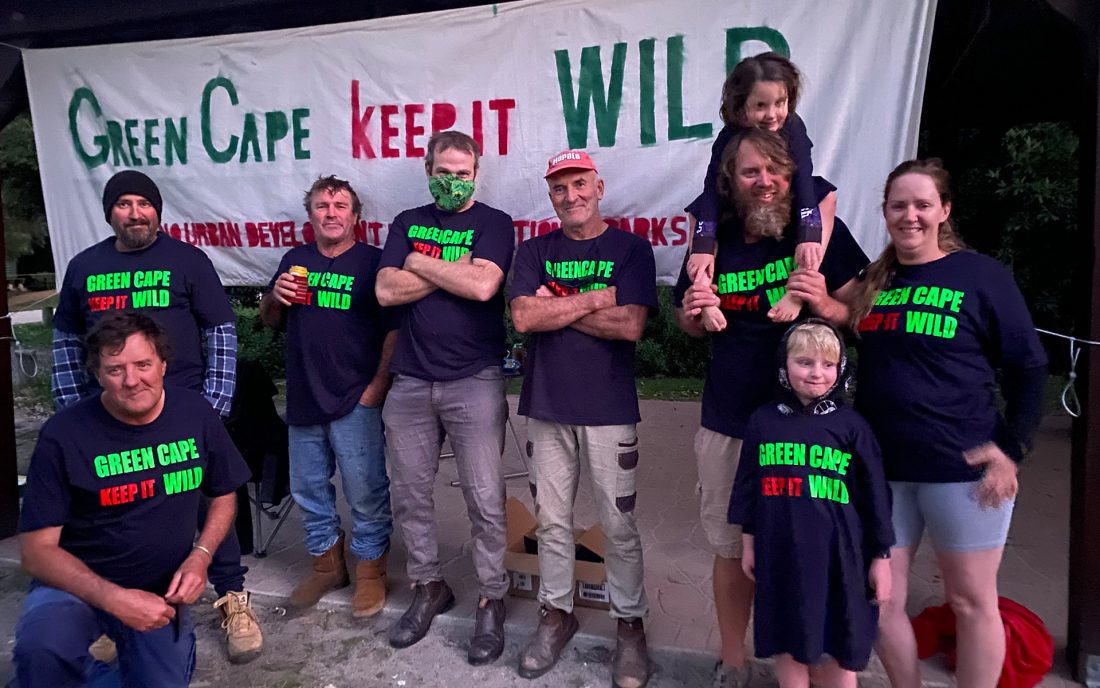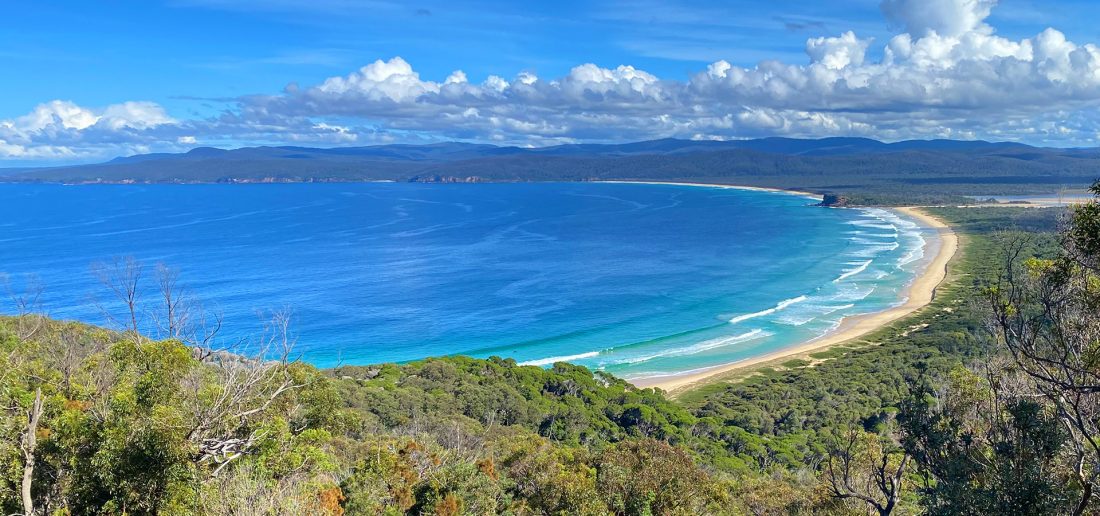
OPINION
RACING TO SAVE
BEN BOYD NP
Ben Boyd National Park on NSW’s Far South Coast is a place of beauty and wildness. But now the park is being threatened by development along its Light to Light Walk, with large lodges planned for pristine sections of the coastline. Development is planned to commence in May; stopping it is a race against time, writes Mick Ripon.
Words: Mick Ripon
Green Cape—or simply the Cape as locals know it—is just south of Eden on the far south coast of NSW. It’s a long way from the bustle of city life, roughly six hours’ drive from Melbourne or Sydney; far enough away to keep most of the weekend holiday makers away. Nestled within Ben Boyd National Park, it is an idyllic, wild location, and the seas around the Cape have a reputation for seriously big fish. It is here that the warm water of the East Australian Current pushes down to meet the cooler nutrient rich waters of the Southern Ocean, initiating a chain of biological activity that ultimately attracts big, top end predators—kingfish, tunas, sharks, marlin and even orcas to name a few. But in recent years, the Cape also has seen the arrival of some less welcome predators: property developers.
Green Cape is the home of the iconic multi-day Light to Light Walk, and tourism developers want to tame this last remaining wild corner of NSW and turn it into an easy, three-day, hut to hut walk experience, similar in scope to a ‘Great Walk’. Or, as the NSW government now prefers to call it, a “world class visitor experience”. The NSW National Parks and Wildlife Service (NPWS) are planning to construct extensive accommodation units at Mowarry Point and Hegarty’s Bay on the wild coast of Ben Boyd National Park. This development will degrade wilderness values within Ben Boyd NP, and it will diminish the sense of remoteness that current park users enjoy, both aspects ironically promoted by the developers.
The vast majority of the broader Eden community oppose this inappropriate development, and we are coming together to fight it. The Ben Boyd Light to Light Community Action Group (BBLLAG) was formed in opposition to it, as was Green Cape Fishing Alliance (GCFA) of which I am spokesperson. But we are racing against time; construction is due to commence in May. And once these accommodation units are constructed one of the last remaining sections of wild coast on NSW will be lost forever.
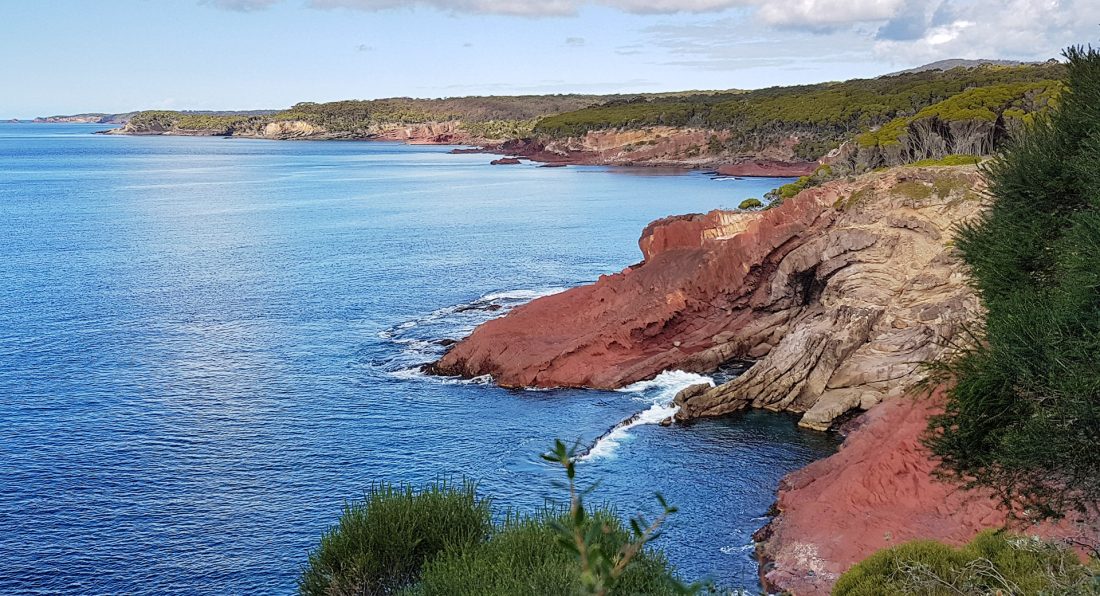
The nature-based tourism industry is booming, and lazy governments—tired of appropriately funding and managing their resource-intensive national parks departments—have recently determined that they are prepared to do commercial deals with the big end of town who want access to our parks. Partially, this is to ease the perceived financial burden of protecting our wild reserves, but also because governments are now viewing parks as a source of revenue rather than a responsibility to care for the environment.
It appears that many of the new developments in our national parks are being initiated and driven by big corporates working in co-operation with political interests under a mutually beneficial arrangement called a ‘partnership’. The public will rarely get to know the detail of these partnerships because the government hides behind the curtain of ‘commercial-in-confidence’. This occurs despite the fact that it’s taxpayers’ money that’s used to undertake all the planning and building of the questionable accommodation infrastructure. The triple whammy for ordinary taxpayers is that their taxes are misappropriated towards developments without adequate community consultation; they are then used to plan and build inappropriate accommodation infrastructure that appeases the whims of a privileged few; and thirdly, these taxpayer-funded ventures are inaccessible to ordinary Australians due to the large fees charged.
“[I had] a comfortable assurance that these precious public resources that I valued and visited were safe and would remain inexpensive to enjoy—I could not have been more wrong.”
In many instances, the infrastructure developments contradict the objectives of the various states’ National Parks Acts. These developments also significantly degrade wilderness values and diminish the experience for many other park users. The incredible deal struck between ‘Great Walks of Australia’, the Tasmanian Walking Company (TWC) and the Tasmanian Government in relation to the ‘franchised’ Three Capes Walk is one example. The sweetener in this deal for the TWC corporate partner is an exclusive 30 year contract for which the private business pays $50,000 dollars per year; they also get to build their own exclusive luxury accommodation units deep inside a National Park perched on iconic viewing areas; a great deal for the corporate business – not such a good deal for the tax payer. It is a fantastic experience for those who can afford the $1,000 per person, per night experience. The wilderness, however, has gone. The public national parks-operated accommodation units on this walk cost almost $500 per person for the three-night hike (not including food or guiding services); a cost that is also prohibitive for many ordinary Australian families. Similar developments that inappropriately exploit our last remaining natural wilderness areas, and that appear a privileged few, have been proposed, and they include the Cooloola Trail, the Hinchinbrook Trail, Flinders Chase and Tasmania’s majestic South Coast Track to name a few.
I have done many of the walks I just listed, and it is why I am so devastated and angry about the way our current system of governance is managing developments within our national parks. I spent much of my younger days exploring, camping and fishing in our national parks. National Parks formed a significant element of who I am today. They connected me to nature, they provided me with a venue to socialise with family and friends and they provided me with a space to reflect. I would draw comfort from seeing National Parks and World Heritage signage; it provided me with a comfortable assurance that these precious public resources that I valued and visited were safe and would remain inexpensive to enjoy—I could not have been more wrong.
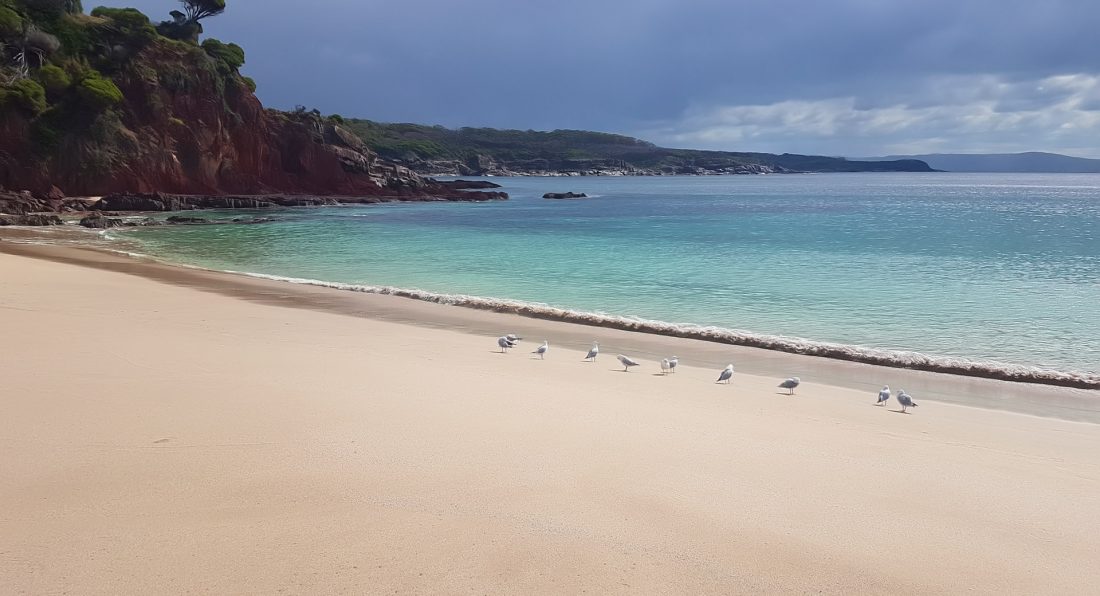
It is worth considering who will actually benefit from many of these developments. Certainly big corporate businesses stand to benefit and possibly political parties, too—the current NSW Government has demonstrated it is prepared to use taxpayers’ money to further its own interests as revealed by recent ICAC findings into pork barrelling.
Our concern is that the NSW Liberal government may be inclined to use the $450 million National Parks Infrastructure Fund to fund projects that fit and favour the aspirations of big tourism operators and their inappropriate desires. This is particularly concerning as the NSW Government has announced a further 200 projects within NSW’s national parks funded under this arrangement. The general public, the National Parks Association, and the 11,000 members of Bushwalking NSW have very limited information on these new projects. It appears that the tourism sector is the main driver.
But here’s the thing: New national polling (Feb 2022) confirms that the vast majority of Australians do not want to see prime protected areas like National Parks compromised by commercial or large–scale development. Of the 1,122 Australians surveyed, the results were unequivocal, with 91% agreeing national parks and conservation areas are critical to protect nature from resource extraction (including logging and mining), and 78% of saying they did not support any development in parks and protected areas at all. This supports an earlier Roy Morgan poll conducted in May 2021 that found 90% of Australians agree with the statement “Australia’s remaining wilderness areas should be protected.”
Dominic Perrottet’s Government is nonetheless determined to forge ahead on the Light to Light development. Information obtained by the GCFA via a Freedom of Information request show that the budget for this development has grown from $7.9 million to an estimated $14.48 million. NPWS will have to seek extra funding from the Department of Planning, Industry and Environment to complete this project.
It is incomprehensible that the NSW government can spend millions of taxpayers’ dollars on infrastructure to appease a privileged few while communities are still desperate for basic infrastructure after the devastating bushfires and now extensive damage caused by flooding.
“The recent flurry of developments in national parks, and the growing list of new proposals, demonstrates a mismatch between community expectations and the current direction of governments.”
The government is now adopting a staged approach to funding this project. This arrangement was signed off by Minister Matt Kean on 28-7-2021, and it involves three stages. Stage 1—the most concerning aspect of the development—involves construction of the accommodation units, and will now cost $9.1 million, and the NPWS will have to find an extra $1.15 million from its current capital budget to cover this cost blow-out. Stage 2 involves redevelopment of Green Cape Lighthouse for accommodation. And Stage 3 has been allocated a further $2.575 million of infrastructure spending; the stage principally involving realignment of the walking track, along with development of a car park.
But we imagine a possible final stage, beyond Stage 3, could be the refurbishing of the Andrew Burns designed cabins to bring them up to a “world class visitor experience”, similar to the privately owned lodges on the Three Capes Track, which were designed by the same architect. If this is the case, then the cost to undertake the new Light to Light Walk and to stay in these cabins may ultimately end up costing the public a similar amount to the Three Capes—roughly $1,000 per night, per person. While NPWS says it will manage the accommodation units, and Minister Kean insists this development is not a ‘Great Walk’ (despite the department funding this development calling it the “Light to Light Great Walk Project”), the GCFA believes it is likely the accommodation service, leased out under a competitive Expression of Interest (EOI) process will ultimately become an exclusive walk for a privileged few.
The GCFA has for months, sought information on the fee structure for this proposed development; it is inconceivable that a $7.9 million development which has blown out to $14.48 million cannot articulate a fee structure. We believe the government is deliberately withholding this information from the community.
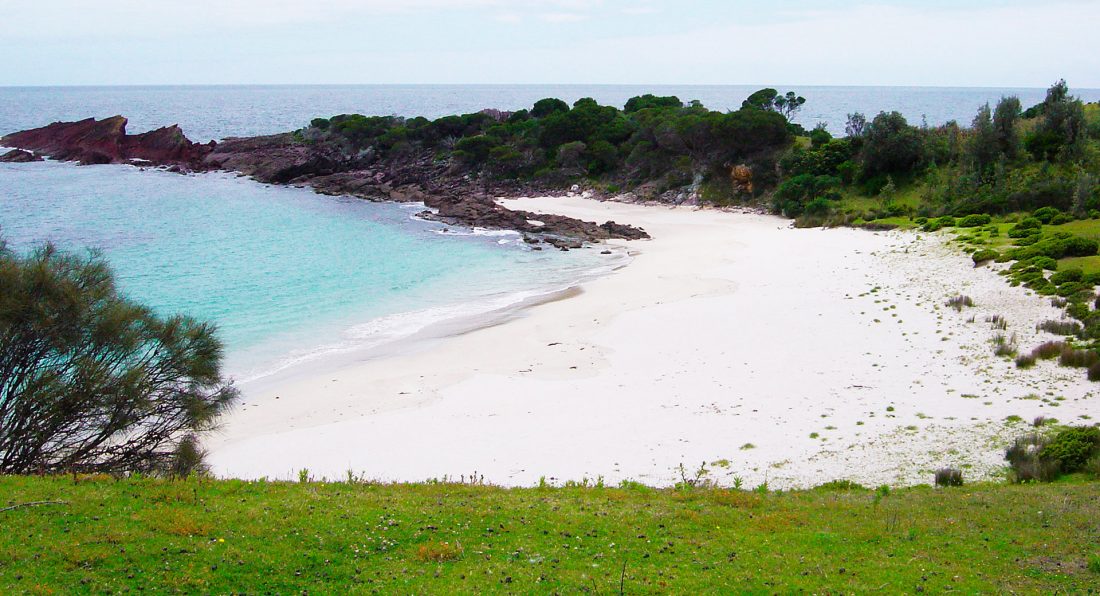
The recent flurry of developments in national parks, and the growing list of new proposals, demonstrates a mismatch between community expectations and the current direction of governments. Most of these new development proposals appear to be driven by the influence of big corporate tourism interests in partnership with political interests. The top-down approach to many of these developments suggests that these politicians then use their—sometimes coercive—power to influence the NPWS to progress their ‘pet’ projects. Good governance demands that the community be consulted in a respectful manner before their taxes are used to build infrastructure to appease the desires of a privileged few. The community wants basic infrastructure like toilets, signage, information centres and more frontline staff such as rangers.
The Green Cape Fishing Alliance and the Ben Boyd Light to Light community Action Group are committed to keeping the last remaining corner of NSW wild and free from inappropriate development. We will oppose this inappropriate development at all stages and at all levels. The wild coast of Ben Boyd should be valued for what it is, beautiful, wild and undeveloped.
CONTRIBUTOR: Mick Ripon the spokesperson for the Green Cape Fishing Alliance (GCFA)
you can help
Sonya Underdahl, an eco-tourism researcher, has designed a survey for the Ben Boyd Light to Light community Action Group and the Green Cape Fishing Alliance. It is a survey tool designed by experts that cannot be ignored by governments. It is a comprehensive survey (it takes around 20 minutes, although it’s not necessary to complete the entire survey for the results to be valid) and the information gained will be used to inform policy makers and governments. It represents a genuine opportunity for the community to be consulted, unlike the tick box exercise undertaken by the NSW government for the Light to Light Walk development. Anyone can do this survey and it will make a difference.
Here’s the link for survey: https://tinyurl.com/mt8djz6n
Fill out the survey and share the survey link with others to help KEEP GREEN CAPE WILD
